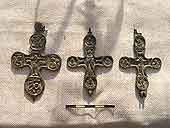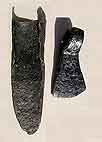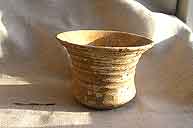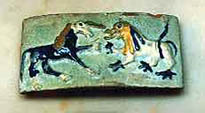The Museum Collections
Introduction
I. History and Art Collection
1. Icons of the 14th – 19th centuries
icons of the 14th – 17th century
2. Jewelry art of the 14th – 20th century
jewelry art of the 14th – 17th century
jewelry art of the 18th – 19th century
the european silver 14th - 19th centuries
3. Small-size sculptures (works of metal, wood, bone)
XI – the beginning of the XX century
Small-size sculptures 11th – 17th century
Small-size sculptures 18th – early 20th century
enamel of Troitza masters 15-8th – early 20th century
5.Embroidery, lace, textiles of the 14th - early 20th century
icon and ornamental embroidery
gold and silver lace
6.Painting of the 18th – 21st centuries
painting of the 18th – 19th centuris
painting of the 20th – 21st centuris
II.Manuscripts and old printed books of the 14th – 17th century
IV.Lithography of the 18th – 19th century
V.Numismatics
VI.Medals of the 18th - early 20th century
VIII.Archeology collection
IX. Russian folk and applied and decorative art of the 17th – 21st c.
1. Artistic wood
folk carved and painted wood
wooden toys
house carving of Sergiev Posad
Khokhloma and Gorodets painting
2. Artistic textiles
embroidery and weaving
printed textiles and lace
Russian shawls
folk costumes
folk garments
printed cotton kerchiefs
|
Archaeological collections (p. 3)
|
|
The collection of the late Middle Ages antiquities occurs from excavation Radonezh and other Old Russian settlements.
Rests of the Moscow ceramics of that time were found in Radonezh by the excavation. These are pots with an ornament “a slanting wave” on a nimbus (a wavy line which was easily put on a vessel rotating on a potter's wheel), table bowls, jugs. These are toys traditional for the Moscow potters 14-15 centuries : birdies-penny whistles, the horses-rattles covered by white angob. Body the horses were moulded from two hollow cylinders, and the pebble inside was located. Here there are products of smiths from iron: difficult trailing, so-called cylinder locks and keys to them, sickles, knifes, drills, shoe heelplate. Iron shovel was a tip of the wooden ancipitous plough. There are certificates of military events: the arrow tip, the spur with a castor, a fragment of a kernel and a case-shot.
|

Bronze crosses. The burial ground Vyshegorod-on-Yahroma. 16th century. |

Iron shovel and axe. Radonezh. 14th century. |

Funeral vessel-balm. The burial ground Vyshegorod-on-Yahroma. 16th century.
|
Archeological excavations and supervision in the Trinity-St.Sergieus Lavra had allowed gather some interesting collections. First, in the Moscow land this is largest collection of white medieval gravestones of 15-17th centuries.
Among them, the gravestone of clerk Vasily Beda is most authentically ancient in the territory of Moscow and the Moscow land of 1480. The find of the gravestone with date 1480 (6988 from world creation), which precedes an odious boundary of 7000 - when all orthodox Russia expected a Doomsday, is the important scientific discovery. Secondly, the collection of oven tiles, among which are so-called «red tiles» local monastic manufacture with imperial symbols (images of lions, griffins, unicorns), decorating tsarina's chambers. The collection of tiles is also stored in a museum from imperial travelling palace of Slotino village.
|

Oven tile from tsarina's chambers. Trinity-St.Sergius monastery. 17th century. |

Oven tile from imperial travelling palace. Slotino village. 17th century. |

White gravestone of clerk Vasily Bedy. Trinity-St.Sergius monastery.1480.
|
|


